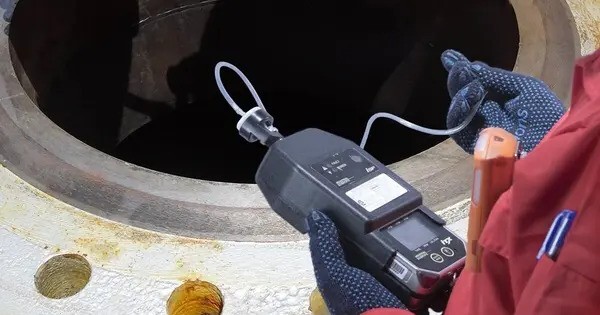An AI-powered system that simulates the human sense of smell was created by researchers at the University of Virginia School of Engineering and Applied Science to identify and monitor harmful gasses in real time. The technology swiftly locates the source of dangerous gases like nitrogen dioxide (NO?) that pose serious hazards to respiratory health by combining a network of sensors with sophisticated artificial neural networks.
The World Health Organization estimates that NO2 and other outdoor air pollutants cause around 4.2 million premature deaths worldwide each year, mostly as a result of respiratory diseases including asthma and chronic obstructive pulmonary disease (COPD).
Their work was recently published in Science Advances.
By continuously monitoring air quality, our AI-powered system has the potential to make industrial settings, urban areas, and even residential buildings safer. It’s a significant advancement in reducing long-term health hazards and safeguarding the environment.
Byungjoon Bae
Graphene-Based Sensors Mimic Human Smell
The novel system is based on metal catalyst nano-island placed on graphene surfaces. This apparatus reacts with specific harmful gas molecules, acting as an artificial nose. The conductivity of the sensor varies as nitrogen dioxide molecules attach to the graphene, giving the system the ability to detect gas leaks with a high degree of sensitivity.
According to Yongmin Baek, a research scientist in the Department of Electrical and Computer Engineering who is in charge of the sensors’ R&D, “nano-islands of metal catalysts are tiny clusters of metal particles deposited on a surface, such as graphene, that enhance chemical reactions by increasing the surface area for gas molecules to interact, enabling precise detection of toxic gases.”
Kyusang Lee, associate professor of electrical and computer engineering and materials science engineering, and one of the lead researchers on the project, explains, “By integrating AI with state-of-the-art gas sensors, we’re able to pinpoint gas leaks with unprecedented accuracy, even in large or complex environments. The artificial olfactory receptors are able to detect tiny changes in gas concentrations and communicate that data to a near-sensor computing system, which uses machine learning algorithms to predict the source of the leak.”

Neural Net Optimizes Sensor Placement
In order to guarantee coverage and system efficiency, the artificial neural network of the system evaluates sensor data in real-time based on the optimal placement of the sensors. A machine learning technique known as the “trust-region Bayesian optimization algorithm,” which divides complicated problems into smaller parts in order to determine the most effective sensor sites, makes this optimization possible. This guarantees quicker and more precise gas leak detection while using fewer resources.
Byungjoon Bae, a Ph.D. candidate in electrical and computer engineering, continues, “By continuously monitoring air quality, our AI-powered system has the potential to make industrial settings, urban areas, and even residential buildings safer. It’s a significant advancement in reducing long-term health hazards and safeguarding the environment.”
The article, titled “Network of Artificial Olfactory Receptors for Spatiotemporal Monitoring of Toxic Gas,” was published in Science Advances. The research team includes Yongmin Baek, Byungjoon Bae, Jeongyong Yang, Wonjun Cho, Inbo Sim, Geonwook Yoo, Seokhyun Chung, Junseok Heo, and Kyusang Lee, who collaborated across institutions such as the University of Virginia and Ajou University.
















